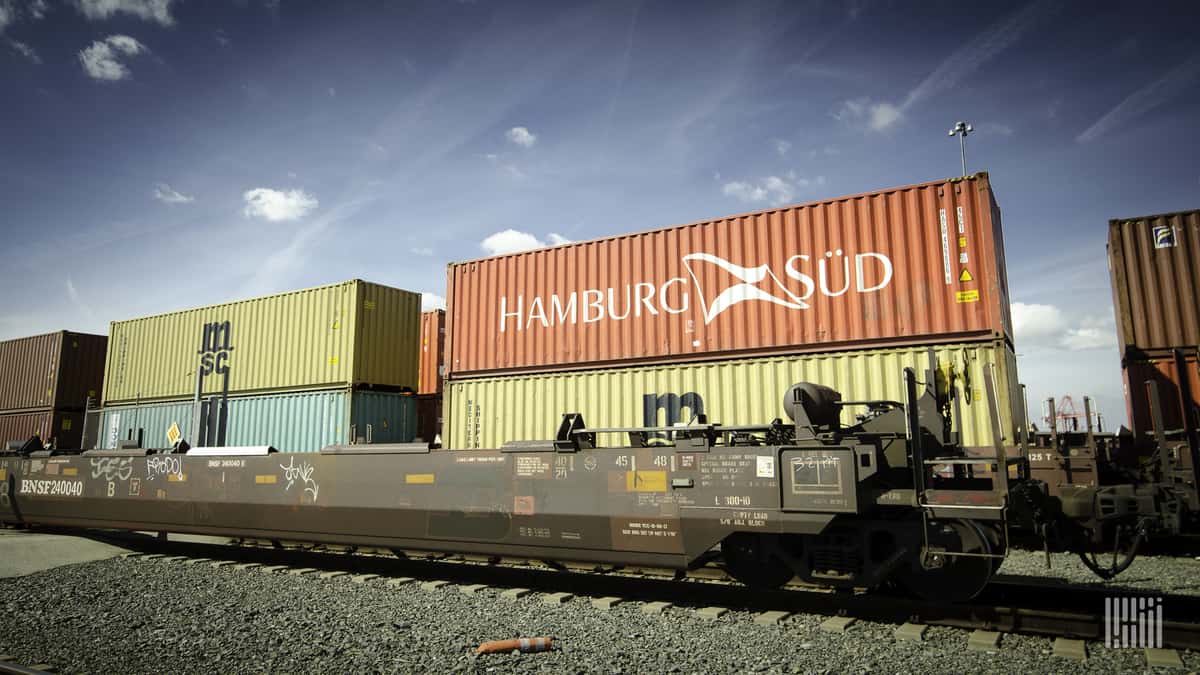Intermodal volumes could start to improve around the fourth quarter of 2020 or the first quarter of 2021, but uncertainty surrounding the coronavirus pandemic makes any volume forecast dicey, said a trio of panelists at Wolfe Research’s Global Transportation and Industrials conference on Tuesday.
“You have some really big factors that aren’t normal items,” and it’s not just an economic issue but a biological one, said Jim Filter, Schneider National (NYSE: SNDR) senior vice president and general manager of intermodal.
Filter was part of the panel, along with Phil Yeager, president and CEO of the Hub Group (NASDAQ: HUBG), and Darren Field, president of intermodal of J.B. Hunt Transport Services (NASDAQ: JBHT).
Forecasting intermodal demand is challenging under existing conditions; in the near term, intermodal volume growth will largely depend on how consumer demand affects economic activity, panelists said. Although volumes at key ports on the East and West coasts are anticipated to be lower in May and June because of canceled sailings, some in the intermodal sector are using consumer confidence and retailer demand as gauges for how intermodal activity might fare the remainder of the second quarter.
“I don’t anticipate [imports] becoming any worse but I’m also moving on assumptions and forecasts we’re getting from our customers,” Field said.
There are three to four conditions needed to grow intermodal volumes, according to Field: tightening truckload capacity, competitive fuel pricing and reliable rail service. A fourth factor that some customers care about is the intermodal sector’s carbon footprint, Field said.
With the truckload market facing pricing pressure from loose capacity and low fuel prices reducing transportation costs, the bid season has been “going as expected,” panelists said. Truckload prices are at a 15% discount in most lanes, with longer lanes experiencing even steeper discounts.
But while this pricing might seem attractive to shippers, shippers are also considering what their long-term capacity needs are as they navigate pricing discussions with intermodal partners, panelists said.
Although the railroads have said they won’t come down on pricing for intermodal, the railroads also don’t want to lose market share, panelists said.
“At the end of the day, we are in a competitive business. … [I]n order to bring in new opportunities, I think the railroads have to participate somehow,” Field said.
As the COVID-19 pandemic eventually abates and the U.S. considers nearshoring and onshoring as a means to diversify supply chains, intermodal stakeholders stand to benefit from increased manufacturing and production coming from Mexico, panelists said.
Manufacturing costs will be a factor in whether companies pursue nearshoring or onshoring opportunities, and shifting manufacturing to Southeast Asia from China could affect which U.S. ports will see increased activity, Yeager said. But intermodal stakeholders stand to benefit should more production move to Mexico, he said.
E-commerce is also a significant growth opportunity for intermodal because intermodal partners will still be needed to bring inventories close to population centers, according to panelists.












?
JR Schugel job requirements article on indeed says online orientation? What’s that ? How do you do the Drug screen and physical online and get a medical card ?